Wednesday, October 21, 2009, 04:13 PM - Lenses
Some more shots from my Vivitar/Soligor 21/3.8 lens (T4 mount):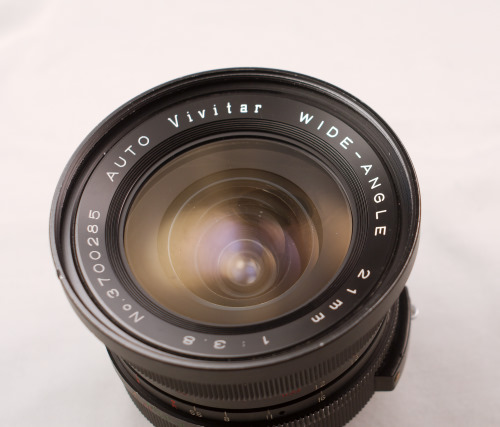
(I actually own two copies of this 21mm lens: the Vivitar version and the Soligor version)
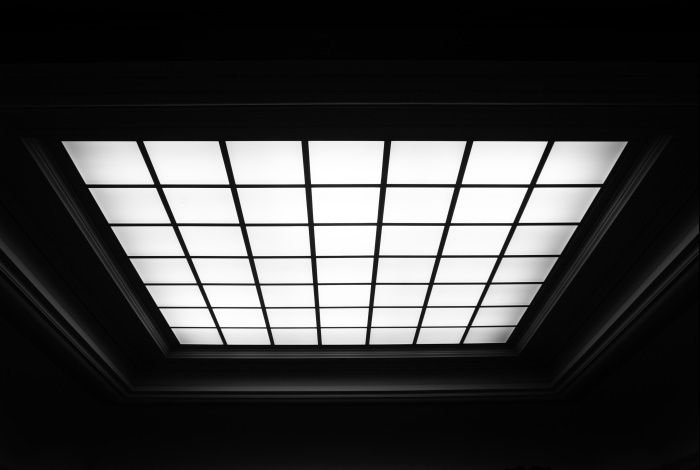
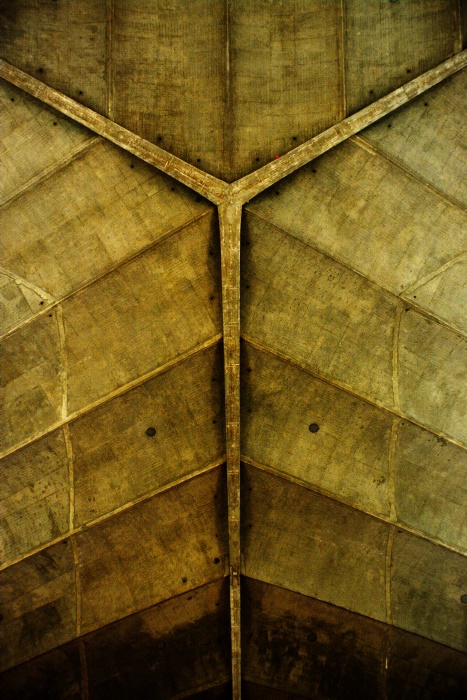




All the pictures are from my 2009 pic-a-day gallery.
| 0 trackbacks
| permalink
| related link
Wednesday, September 2, 2009, 12:23 PM - Lenses
The Zenitar M2s is a very surprising lens. Designed to be a cheap replacement for Helios 44-x lenses as a kit lens for Zenit DSLRs, is a 50/2 lens in a fully plastic barrel (although some internals are made of metal). This plastic housing is really a pity, as it gives it a cheap look and feeling.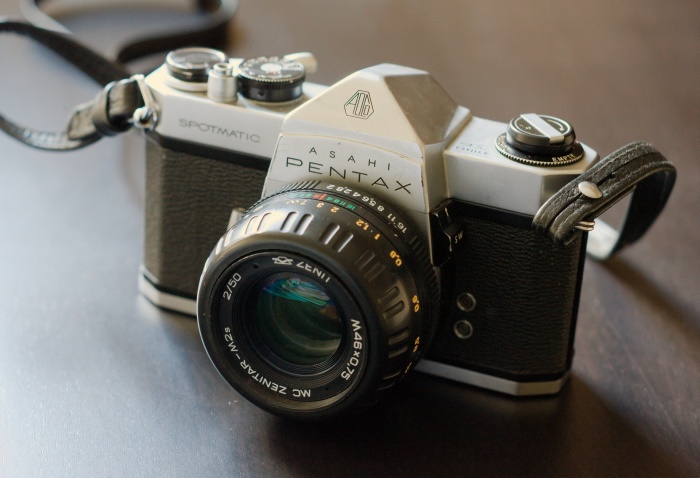
However, from an optical point of view, it is really surprising. A smooth bokeh wide open, quite robust against flare and very sharp once stopped down (even if wide open sharpness is already quite good). Krasnogorsky Zavod (the manufacturer) rates it as able to resolve 65/40 l/mm, while the supposedly very sharp MC Helios 44M-7 is only rated as able to resolve 50/30 l/mm.
It is available under the "Zenitar M2" and "Zenitar M2s" labels for the m42 version, and "Zenitar K2" for the K mount version:
KMZ page about this lens
Here are a few shots with it, from my 2009 Pic-A-Day gallery:





Monday, August 24, 2009, 06:23 PM - Servicing
Here is a partial repair guide for Jupiter 9 lenses. Unfortunately I was not able to fully dismantle it, as several screws broke when trying to use them.This lens optical schema is made of 7 elements in 3 groups. The diaphragm is located between the two triplets.

The front element can be accessed by unscrewing the front ring using a spanner:

The rear group can be unscrewed in a similar way, but it can not be directly removed from the lens barrel. However, if you set the lens to it minimum focus distance, you will be able to move the rear group inside the barrel. If you are very careful, that might be enough to allow you to clean it or the aperture blades.
Remove the rear ring by removing the side screw and unscrewing the ring:
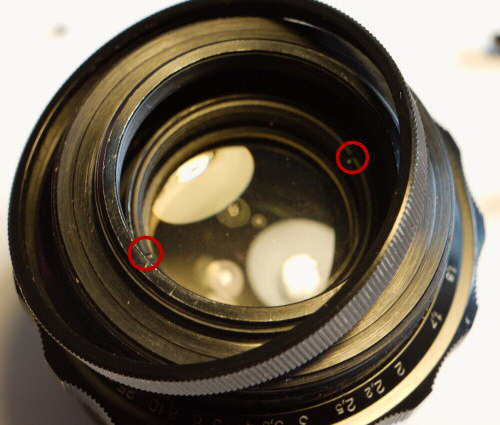
You can now remove the focus ring:
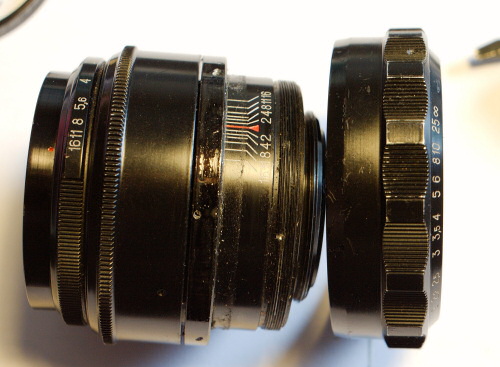
That should be enough to allow you to access the focusing helicoid, by setting the lens to its minimal focus distance.
Now, remove the diaphragm ring:

From there, you can access the clicking mechanism of the preset aperture. If your aperture preset ring doesn't click properly, you might need to clean this small cylinder, or re-shape the metal part that sits on top of it.
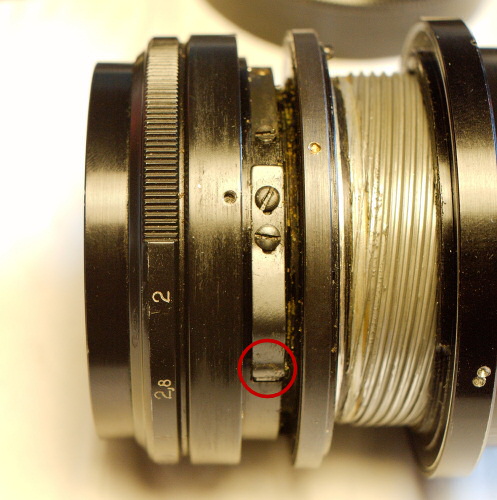
You can now remove the aperture selection ring:
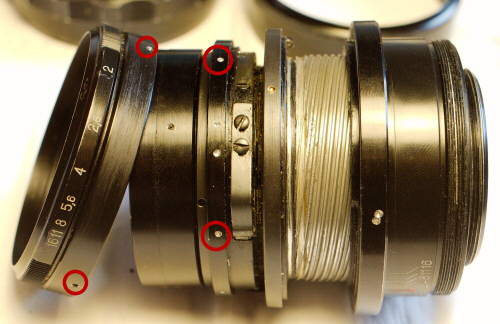
This allows you to remove the front part of the lens, which includes the front element and the front triplet. The front triplet can be removed by unscrewing this rear ring (using a spanner):

Wednesday, July 29, 2009, 12:05 PM - Servicing
This is an 50/1.8 M42 planar lens, designed by Carl Zeiss (Oberkochen, not Jena) and built by Rollei in Singapore.This one is branded as Ifbagon, but it is also available under the "Rollei - Design by Carl Zeiss" and "Voigtländer Color-Ultron" labels.

As its aperture is only designed to work in automatic stop down mode, it needs to be converted into manual mode to be usable on non-m42 cameras with an adapter.
First, set your lens to infinity and remove the four rear screws...

...and remove the mount.

Remove the outer black ring, and you can now remove those three screws:

One of those screw is longer than the other ones, as it acts as a stopper for the focusing mechanism. It is the one which goes on the bottom.

Here you can see the aperture transmission mechanism, which you should now remove.


The small cam is slightly asymmetric, so you can only put it back in one way.
Remove yet another ring in order to see the aperture mechanism.
Beware not to loose the small bearing and the spring which should be pressed on it.


The vertical cam of the diaphragm goes within the "fork" on the part we just removed. You can only put it back if the lens is focused at infinity.

You can now lock the aperture into manual position. I used a piece of insulator from an electric wire.

You should now be able to put everything back. If for any reason you goofed up by unscrewing the focusing helicoid, you can easily adjust infinity from the front of the lens.
Unscrew the front black ring, and you can access the three screws that will allow you to properly restore infinity setting.

Back Next

 Calendar
Calendar




